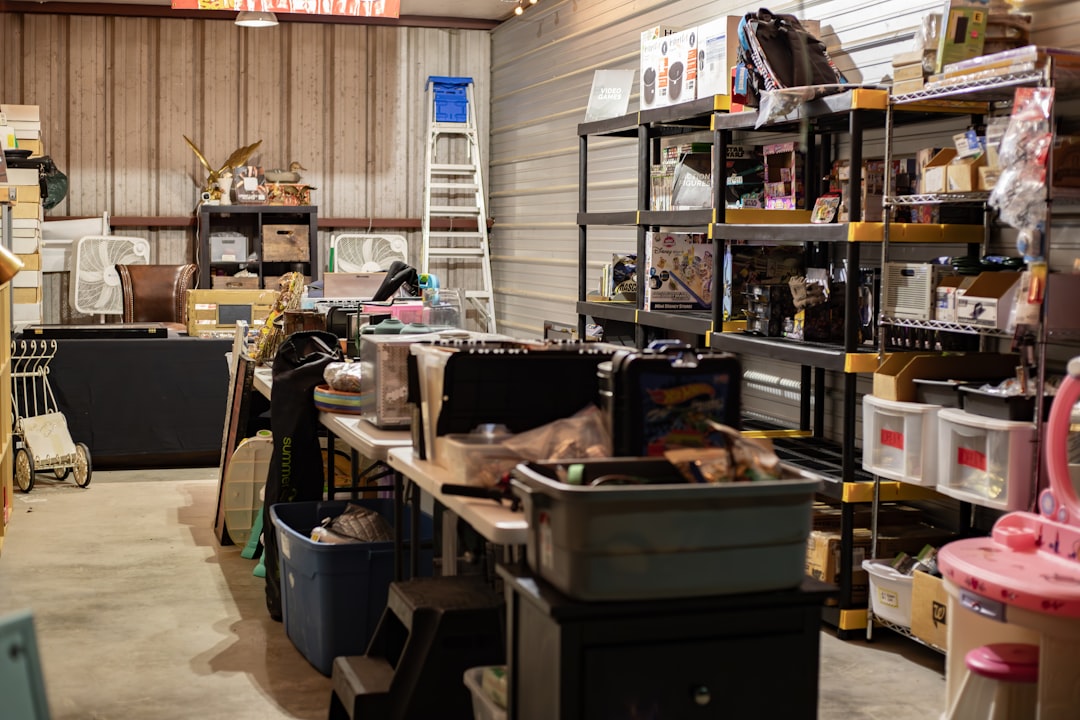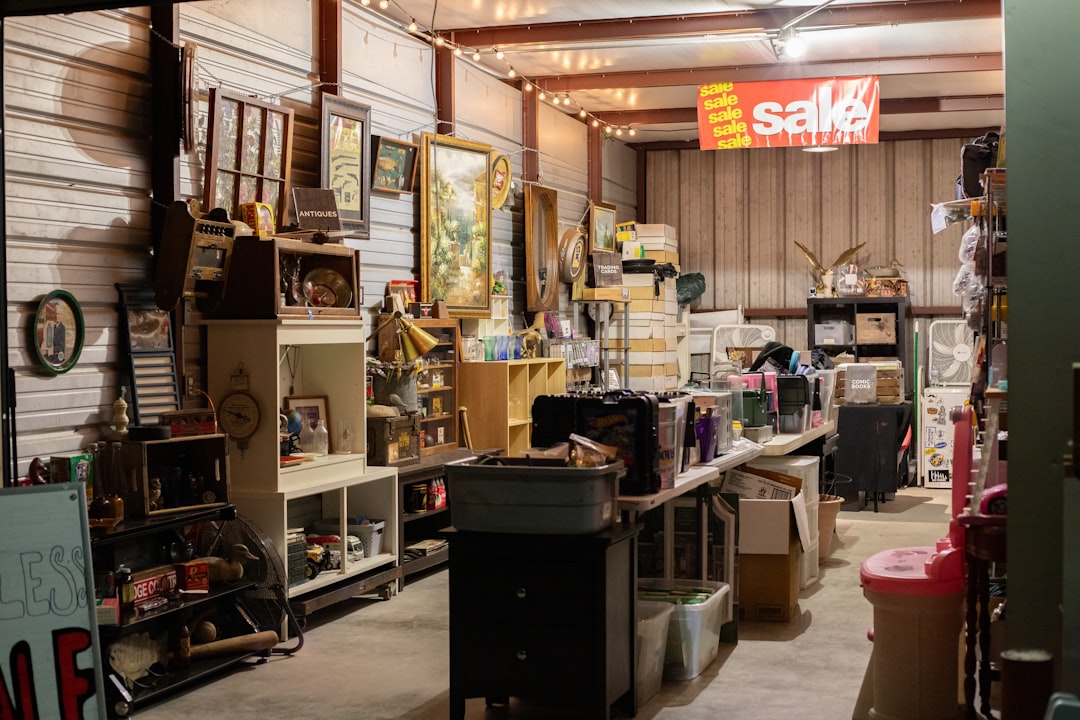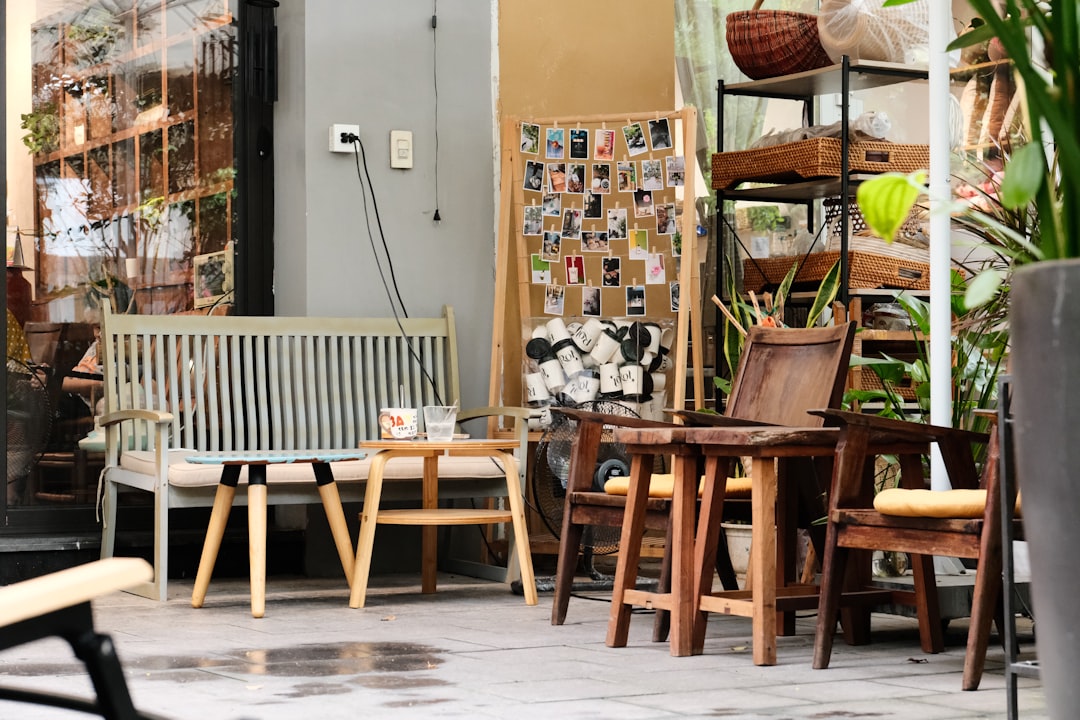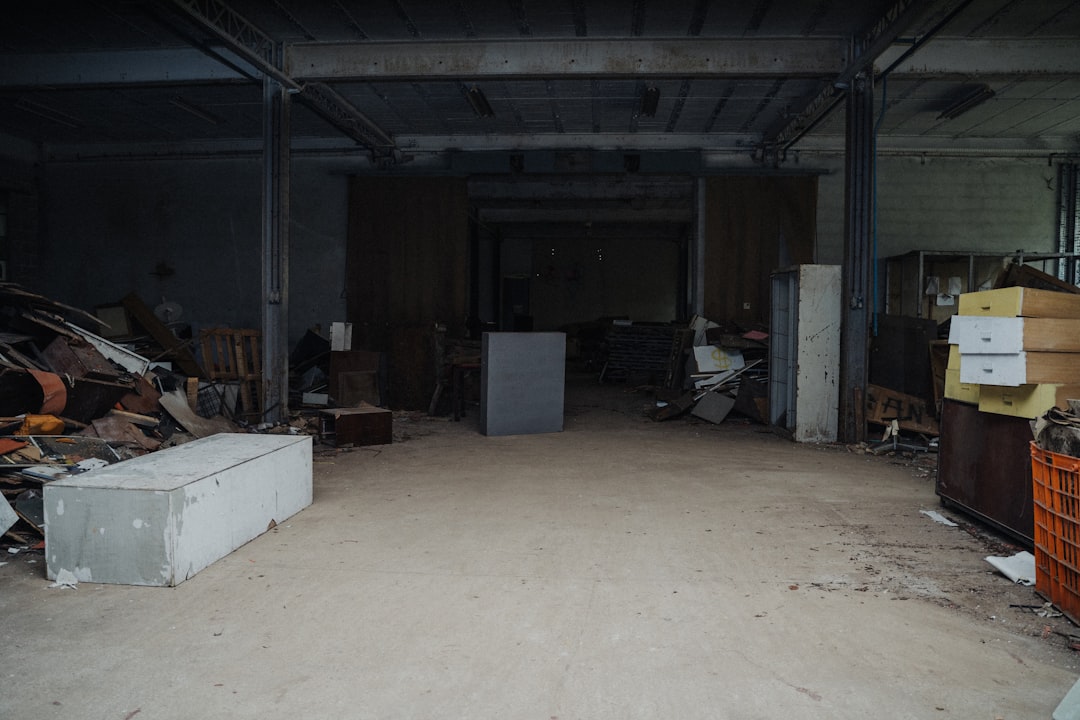QR codes have evolved into a strategic tool for bridging offline engagement with online action for furniture repair supply stores. Many stores face challenges such as missing out on high-intent prospects browsing aisles but never expressing their needs, or having difficulty measuring which print materials drive real interest. QR codes overcome these friction points by creating a smooth, accessible pathway for customers, no app required, whether they are searching for tools, how-to resources, or expert services.
Furniture repair supply stores benefit by helping customers transition effortlessly from physical catalogs and displays to online purchases, resource access, or repair bookings. In an environment where discovery and convenience influence loyalty, overlooking untracked interest often results in lost connections. By enabling instant access to up-to-date product details, availability, and support, QR codes transform moments of curiosity into measurable action.
By placing QR codes at key physical and digital touchpoints, furniture repair supply stores gain valuable insights into who is engaging, what sparks interest, and how touchpoints move buyers along their journey. This insight helps convert anonymous interactions into qualified leads, fueling smarter follow-up and improved outcomes.
How to Enable Instant Access in Furniture Repair Supply Stores Using QR Codes: A Step-by-Step Guide

Furniture repair supply stores often face bottlenecks like manual intake processes, incomplete product inquiries, or shoppers hesitating instead of taking action. QR codes close these gaps by connecting physical spaces with digital resources and improving conversion rates. They make it easy for customers to move from browsing to taking a next step, whether that is watching a tutorial, checking stock, or booking a repair consultation.
To make QR deployment effective, focus on removing friction from common analog processes. Replace printed brochures with updatable landing pages, reduce paper forms with mobile-optimized intake flows, and move appointment scheduling from wall calendars to online calendars. Each improvement removes barriers that previously caused drop-off and adds a trackable action you can measure.
Steps include:
- Digitize analog assets: Replace printed brochures, paper forms, and appointment cards with QR codes linking to digital resources. By doing this, you maintain the flexibility to update content in real time and you ensure customers always see current information instead of outdated specs or pricing.
- Set clear success metrics: Establish metrics such as inquiry rates, service bookings, and sales as measures of success. Define conversion events for each code so you can evaluate which placements and offers are driving measurable outcomes.
- Place codes where decisions happen: Place QR codes in high-traffic areas, on shelves, repair counters, and packaging, with clear calls to action such as “Scan for instant discounts.” A visible CTA reduces uncertainty and makes scanning feel like a natural next step.
- Monitor and optimize: Use dashboards to monitor scan data and track new leads, refining placements and messaging for ongoing optimization. Iterate on creative, landing page flow, and incentives based on what scan and conversion data reveals.
Why Do QR Codes Matter for Furniture Repair Supply Stores?

Furniture repair supply stores often lack visibility into who browses or interacts with displays, catalogs, or signage. Customers typically want real-time information about product stock or DIY tips, but if stores cannot capture these micro-moments, potential leads remain anonymous. QR codes provide instant access to information, tutorials, or support, and dynamic QR technology keeps offers and details current. Analytics reveal which marketing assets drive action, while QR-enabled bookings and inquiries become trackable, helping attribute outcomes to their source and enabling effective follow-up. For a deeper framework, see Sona’s blog post Essential Guide to Offline Attribution.
Beyond convenience, QR codes help the category solve long-standing measurement problems. When you add a QR code to shelf talkers, workshop flyers, or repair counter signage, you create a data signal. Scans connect a physical asset to a digital outcome so you can quantify which in-store messages resonate, which products inspire research, and where to invest merchandising budget. The result is smarter demand capture, better training for staff, and a customer journey that feels personalized.
- Offline to online continuity: QR codes turn static print and packaging into interactive entry points. Shoppers browsing adhesives, stains, or drawer slides can immediately open application guides, compatibility charts, or side-by-side comparisons.
- Speed without friction: No app downloads or logins are required. A scan opens a booking form, video guide, or cart. That simplicity reduces the effort customers must expend and increases the likelihood they complete the action.
- Dynamic flexibility: Dynamic QR codes let you update destinations without reprinting. If inventory changes or a video is updated, one click in a platform such as Sona QR redirects scans to the latest resource.
- Real measurement and attribution: You can see scan volume by asset, location, and device. Connect those scans to form fills, booked consults, or sales to understand ROI and refine allocation.
- Low cost, high scale: Codes are inexpensive to generate and can be deployed across every surface in days. This democratizes experimentation so smaller teams can test and learn quickly.
Common QR Code Formats for Furniture Repair Supply Store Use Cases

QR codes are versatile, and certain formats fit the furniture repair supply context especially well. The right format depends on the action you want a shopper to take and the environment in which the scan happens. Stores that match format to intent consistently see stronger engagement and cleaner data.
For in-store research, link to mobile-friendly landing pages with specs, installation tips, and compatible accessories. For bookings and inquiries, route scans to short forms or pre-filled SMS messages that reduce typing. For loyalty or contact saving, use vCards or app links. Consider Wi-Fi onboarding to help customers research while on site without data concerns.
- Web links: Drive scanners to product pages, comparison charts, how-to articles, or workshop registration. This is the default format for shelf tags, endcap displays, and printed catalogs because it opens any content type.
- vCards: Let customers save your service counter or repair desk contact information in one tap. Ideal for business cards, receipts, and repair counter signage so shoppers can easily call back with measurements or part numbers.
- SMS or email: Pre-fill a message like “I need help matching this veneer” or “Requesting a quote for hinge replacement on a cherry cabinet.” This format is powerful for high-intent inquiries where immediate staff follow-up is valuable.
- Wi-Fi access: Offer guest access with a scan so customers can watch tutorial videos, download instructions, or compare products without leaving the store. Consider QR vs Wi‑Fi approaches to help customers research while on site without data concerns.
- App downloads: If you have a loyalty or digital catalog app, auto-detect device and route to the proper store. Use this format sparingly and lead with a benefit such as “Scan to earn points” to improve adoption.
- Dynamic QR for agility: Use dynamic QR on printed materials and fixtures. With Sona QR, you can change destinations post-print, run A/B tests, and attach UTM parameters for attribution without reprinting assets.
Where to Find Growth Opportunities with QR Codes

Growth in furniture repair supply often stalls because the most important moments happen off the grid. Shoppers read a stain label and wonder about compatibility, compare drawer slide lengths, or debate whether to repair or replace a chair leg, then leave without taking action. QR codes insert a measurable next step in those moments. Furniture brands are already applying these patterns; see furniture trade examples.
Evaluate your customer journey from curbside to post-purchase and add QR codes wherever questions arise or decisions are made. The goal is not to put codes everywhere, it is to put the right code where it nudges the right action. Prioritize high-traffic touchpoints that already have visual real estate and clear intent.
- Product shelves and displays: Link supplies to instructional guides and capture interest on the spot. A code on a wood filler endcap can open a one-minute video on application techniques and a link to compatible finishing oils.
- Packaging and labels: Enable reordering, warranty activation, or part lookup instantly. A code on a brush package can open cleaning instructions and a reorder link, while a code on sandpaper sleeves can suggest compatible grit progressions. For wholesale teams, see QR codes for wholesale.
- Point of sale: Simplify feedback collection and deliver digital offers to turn buyers into loyal customers. A code on the checkout counter can enroll customers in a loyalty program, capture a quick NPS score, or deliver a limited-time accessory discount.
- Storefront signage and windows: Convert passing foot traffic into trackable workshop signups or consultations. Promote a “Scan to book a free repair assessment” CTA that collects contact details and preferred time slots.
- Direct mail and door hangers: Bring offline shoppers online and attribute engagement accurately. Seasonal direct mail with unique UTM-tagged QR codes can route to curated collections such as “Winter wood care” or “Outdoor furniture restoration.”
Use Cases for QR Codes in Furniture Repair Supply Stores
Traditional signage and paper info sheets often result in missed opportunities because they require customers to remember information and take action later. QR codes shift action into the present so you capture intent while it is hot. The following use cases map directly to common store interactions and solve frequent customer pain points.
When you deploy these use cases with dynamic QR, you retain the flexibility to evolve content as seasons and inventory change. You also gain consistent measurement across placements so you can double down on what works.
- Tutorials on demand: Provide repair guides and video tutorials via product packaging scans. A shopper purchasing wood glue can scan to see clamp times, joint types, and cleanup tips, reducing returns and increasing satisfaction. Link packaging to product packaging destinations that load fast on mobile.
- Instant specs and offers: Deliver real-time specs, reviews, and discounts on shelf tags and labels. Shoppers comparing finishes can scan to view coverage per quart, dry times, and user photos, then apply an offer that nudges the purchase.
- Self-serve booking: Enable digital appointment booking from printed materials to reduce manual intake errors. A poster near the repair counter can route to a booking calendar, capture photos of the damaged item, and send confirmations automatically.
How to Build High-Value Audiences for Retargeting with QR Code Campaigns
Each scan contains valuable context: what item was scanned, where the scan happened, and which call to action drove interest. By placing distinct QR codes across the journey, you turn those signals into audience segments you can nurture through email, SMS, and ads. The objective is to match follow-up messages to the true intent behind each scan. For tactical execution, see Sona’s Playbook intent-driven retargeting.
Furniture repair supply stores can segment by product category, service type, and browsing context. For example, an in-store scan on a drawer slide display signals a ready-to-buy researcher, while an at-home scan of a direct mail catalog suggests a planner who may need education or inspiration before purchasing.
- Create journey-stage codes: Use different QR codes for awareness assets like neighborhood flyers, consideration assets like in-aisle guides, and conversion assets like coupons. Each scan lands in a distinct segment aligned to funnel stage.
- Tag by intent and action: Assign codes to specific actions such as exploring upholstery tools, booking a consultation, or requesting a stain color match. These tags tell your CRM what content to send next and which salesperson should follow up.
- Segment by location and timing: Separate in-store scans from at-home scans and weekday scans from weekend scans. In-store, weekend scans can trigger faster follow-up or a reminder while the customer is still shopping nearby.
- Sync to CRM and ad platforms: Feed segments into HubSpot, Salesforce, Klaviyo, or Meta Ads. Trigger nurture sequences, create lookalike audiences, or set alerts for sales staff when a high-value product category is scanned.
- Build suppression and retention lists: Use scan history to avoid over-messaging. If someone booked a service, suppress promotional emails for DIY tools and switch to care tips or cross-sells that match the service performed.
Integrating QR Codes into Multi-Channel Marketing for Furniture Repair Supply Stores
QR codes unify your offline and online marketing so you can tell a consistent story, measure every touch, and respond in real time. The key is to connect each channel’s creative to a QR code with a clear, benefit-led CTA and a destination built for the mobile moment. With a centralized platform like Sona QR, you can manage all codes, maintain brand consistency, and monitor performance from one dashboard.
Furniture repair supply stores typically invest in catalogs, in-aisle signage, local print ads, workshops, and seasonal promotions. QR codes make each of those investments work harder by giving them a digital end state you control and can optimize. For newspapers, see newspaper QR integration.
- Brochures and print collateral: Add codes to seasonal catalogs, restoration guides, and workshop flyers. Drive to mobile landing pages with how-to videos, parts lists, and signups. Each scan reveals which topics and layouts engage buyers.
- Social media and UGC prompts: Print codes on event signage and packaging that link to a submission form where customers upload before-and-after photos. Curate user-generated content that inspires others and fuels your social calendar.
- Direct mail and local inserts: Include personalized codes that route to neighborhood-specific offers such as “10 percent off refinishing supplies this weekend.” Tie scans to addresses to measure which routes and messages perform best.
- Digital signage and video loops: Feature a large on-screen code in your workshop area or at POS. Invite viewers to “Scan to get the materials list” or “Scan for today’s finishing guide,” reducing friction and guiding product selection.
- Events and community workshops: Place codes on booth banners, handouts, and instructor aprons. Use them for quick check-in, materials downloads, and post-event feedback, then retarget attendees with exclusive bundles.
Step-by-Step QR Campaign Execution Checklist
A strong QR program deserves the same rigor you would apply to any performance channel. Treat each code as a campaign artifact with a goal, audience, and measurable outcome. Start small, instrument well, and iterate quickly so you learn which placements and messages pay off.
Below is a practical, repeatable checklist tailored to furniture repair supply stores. It moves from planning, to build, to launch, to optimization. Use it to eliminate guesswork and keep your team aligned.
Step 1: Choose Your Use Case
- Define your campaign goal: Choose one primary outcome such as appointment booking for restoration consultations, promotion of a workshop series, or upsell of compatible accessories. A crisp goal prevents scattered creative and muddled results.
- Align QR purpose to the journey: Map the code to the stage it supports. For example, awareness codes on storefront windows should inspire interest, while conversion codes on receipts should drive reorders or reviews.
- Set audience and context: Decide who you are targeting and where they will scan. A code in the sandpaper aisle will serve a different need than a code on a mailed postcard.
Step 2: Pick a QR Code Type
- Static for unchanging content: Use static codes for destinations that will not change, such as a PDF of your workshop calendar. Static codes are simple and cost-effective for evergreen content.
- Dynamic for flexibility and analytics: Use dynamic codes in Sona QR for campaigns you want to measure or update. Dynamic codes in Sona QR let you change destinations, layer UTM parameters, and run A/B tests without reprinting.
- Match format to action: Choose web links for education, forms for bookings, SMS for quick questions, and vCards for contact saving. The right format reduces effort and increases conversion.
Step 3: Design and Test the Code
- Brand the frame and add a CTA: Place your logo and colors in the QR frame and include a benefit-driven CTA like “Scan for a 2-minute repair guide.” Branded codes draw the eye and communicate value.
- Ensure scannability: Test from multiple distances, angles, and under store lighting. Use sufficient contrast, quiet zone, and size. Poor scannability is the most common reason for missed engagement.
- Validate the mobile experience: Open the destination on iOS and Android devices. Forms should be short, buttons large, and load times under three seconds so you do not lose impatient scanners.
Step 4: Deploy Across High-Impact Channels
- Prioritize placements: Start with shelf talkers, endcaps, repair counters, packaging, and receipts. These locations have clear intent and available space for a CTA that invites scanning.
- Match message to environment: Tailor copy to the shopper’s mindset. On a heavy-duty glue display, use “Scan to choose the right clamp time.” On a storefront banner, try “Scan to book a free assessment.”
- Train staff to amplify: Coach associates to point out codes during consultations and checkout. A verbal prompt like “Scan here for the full materials list” boosts adoption significantly.
Step 5: Track and Optimize
- Instrument for attribution: Use Sona QR to track scans by time, device, and location. Append UTM parameters so analytics tools can attribute conversions to specific assets and placements.
- Monitor conversion flow: Watch where people drop off. If scans are high but bookings are low, simplify the form or adjust the offer. If scans are low, improve visibility and CTA language.
- Run iterative tests: Test code placement, creative, and landing page elements. Roll out winners across stores and retire underperforming assets so your program compounds gains.
A disciplined checklist helps QR codes shift from a tactical experiment to a durable growth lever. Teams that revisit this cycle monthly see compounding improvements in scan rates, conversion rates, and revenue lift.
Tracking and Analytics: Moving from QR Scans to Revenue
Tracking must move beyond counting scans. You need to know which scans lead to material outcomes such as booked services, item reorders, or larger baskets. That requires tagging each code, designing destinations for conversion, and connecting scan events to your CRM so you can attribute revenue to specific assets and campaigns.
With Sona QR and Sona.com—Sona is an AI-powered marketing platform that turns first-party data into revenue through automated attribution, data activation, and workflow orchestration—you can capture the entire arc from the first scan to closed revenue. Sona QR provides live dashboards that show scan volume by placement, device, and store. Sona.com enriches those interactions with identity resolution and multi-touch attribution so you can see how QR engagement contributes to pipeline and sales.
- Track every scan detail: Capture time of day, device, OS, and location. This context reveals patterns such as high weekend interest in outdoor finishes or weekday surges for commercial-grade adhesives.
- Measure engagement by channel: Compare scan activity across shelves, packaging, direct mail, and windows. Shift budget toward the placements and messages that drive conversions, not just clicks.
- Respond in real time: Use live data to pause underperforming content, rotate offers, and move codes to better positions. Real-time optimization prevents wasted impressions.
- Sync scan data to your CRM: Enrich contacts in HubSpot or Salesforce with scan events. Trigger follow-up sequences, assign tasks to sales, and score leads based on high-value product categories.
- Attribute revenue confidently: Connect anonymous scans to known buyers using identity resolution and first-party data collected on forms. Tie scan-assisted journeys to closed sales so you can prove ROI.
- Unify touchpoints across stages: Link QR scans with website visits, ad clicks, and emails using Sona’s Buyer Journeys. For frameworks, see Sona’s blog post single vs multi-touch models.
By building an analytics spine for your QR program, you turn an engagement tool into a performance channel. That lifts confidence in the channel, improves interdepartmental alignment, and accelerates funding for additional placements and campaigns.
Tips to Expand QR Success in Furniture Repair Supply Stores
A few best practices will help you capture more scans, lift conversion rates, and maximize the value of your data. Focus on clarity, relevance, and speed. Reduce typing wherever possible, remove unnecessary steps, and explain the benefit of scanning in plain language.
As you grow, automate follow-up and segment by intent. Customers should feel like scanning creates a helpful, personalized experience. The more you connect scans to tailored content and offers, the more likely customers are to scan again and move toward purchase.
- Use unique codes per asset: Assign a distinct QR to each shelf talker, poster, or mailer. This lets you pinpoint which creative and placements perform best so you can double down on winners.
- Add UTM parameters to destinations: Tag every QR link with source and medium so analytics tools can attribute outcomes to specific assets. Clean attribution is essential for optimization and budget allocation.
- Train staff to invite scanning: Ask associates to reference the benefit in conversation, for example, “Scan this to get the full materials list and 10 percent off today.” A friendly prompt increases scan rates dramatically.
- Automate follow-up: Integrate Sona QR with your CRM to trigger emails or SMS messages after key scans. A code on invoices can trigger a “Need a refill?” reminder and a code on repair tickets can trigger a “How did we do?” Google Forms QR.
Creative deployment ideas that work well in this vertical include codes on loyalty cards that unlock periodic finishing tips and exclusive bundle offers, and codes on tool rental tags that open safety checklists and accessories, which increases attachment rates.
Real-World Examples and Creative Inspiration for Furniture Repair Supply Stores

Seeing how other stores deploy QR codes can spark ideas for your own environment. Aim for placements that answer common questions, shorten steps to action, and make customers feel supported throughout their project. The following examples highlight patterns that reliably raise engagement and measurable outcomes.
Pair these ideas with dynamic QR so you can swap content as seasons, inventory, and promotions change. Use performance data to turn creative inspiration into an optimization loop that compounds results.
- Scannable shelf education: Replacing static shelf talkers with QR-linked microsites that explain finishes, prep steps, and compatible tools. Stores report engagement lifts up to 30 percent and fewer returns due to improper usage.
- Direct mail with redemption tracking: Adding unique QR codes to seasonal mailers that route to curated collections and coupons. Teams can measure redemptions by route and household, then move budget toward the formats that convert.
- In-the-moment reviews: Placing a code at POS that opens a one-tap review flow tied to the purchased category. Quick capture of positive sentiment improves local SEO and boosts credibility for product pages, especially for Google reviews.
- Workshop enrollment at displays: Featuring “Scan to learn refinishing in 60 minutes” on a refinishing endcap. Customers enroll while motivated, leading to fuller classes and higher post-workshop basket sizes.
- Service triage from the window: A storefront poster with “Scan for a free repair assessment” that collects photos and dimensions. Prospects can engage after hours, and staff can qualify leads before the first call.
Expert Tips and Common Pitfalls in QR Deployment for Furniture Repair Supply Stores
Experienced teams succeed because they design for the real world. Lighting, distance, and aisle clutter influence scan behavior, and clear CTAs outperform clever but vague copy. Avoid treating a QR code as decoration. Treat it as a conversion lever with everything around it optimized to drive the desired action.
Common mistakes include linking to desktop-heavy pages, hiding codes in dense graphic designs, and leaving content stale after a campaign ends. Prevent these issues by incorporating testing, ownership, and content governance into your QR program. For best practices, see QR codes in marketing.
- Test in real store conditions: Validate scannability from three to six feet under fluorescent lighting and from various angles. Check glare on laminated materials and verify code readability on curved packaging.
- Tailor content to product and persona: A DIYer scanning a varnish label needs step-by-step instructions and safety notes. A professional contractor scanning a hinge display needs spec sheets and bulk pricing.
- Keep destinations current: Replace expired offers and update inventory indicators. Dynamic QR ensures old assets still deliver value rather than a dead end that erodes trust.
- Make benefits explicit: State exactly what the scan delivers, such as “2-minute application guide,” “Book a slot in 30 seconds,” or “Get 15 percent off finishing kits.” Specificity increases intent and clarifies value.
Top performers treat QR as integral to sales processes. Associates reference it during consultations, managers review scan data in weekly huddles, and marketers iterate creative monthly. This operational rhythm turns QR from a novelty into a growth engine.
Final Thoughts
QR codes, strategically deployed, turn physical retail interactions into digital opportunities. Furniture repair supply stores can reduce friction, capture valuable buyer signals, and empower smarter business decisions by making QR codes a core part of their customer journey. When every shelf, sign, and package can invite action and provide proof of interest, you transform anonymous browsing into qualified engagement.
Furniture repair supply stores that embrace QR-powered strategies gain the ability to identify and engage high-value prospects who were previously invisible, unify messaging, and build a foundation for sustainable growth. Integrating QR codes into packaging, displays, and collateral puts stores at the point of customer interest, translating more engagements into sales and insights. This approach improves the customer experience and sets the stage for a fully connected, modern retail operation.
- Instant engagement: Codes on shelves, signs, and packaging bridge offline moments to digital resources, education, and offers. Customers act while interest is high, which increases conversion.
- Connected experiences: QR-enabled journeys move shoppers from awareness to booking or purchase in fewer steps. The experience feels helpful and consistent across every channel.
- Actionable data: Each scan becomes a signal you can measure, segment, and retarget. Over time, this builds a performance engine that directs budget to what actually works.
With Sona QR, you can design, deploy, and analyze QR campaigns from a single platform, while Sona.com connects scans to revenue through identity resolution and multi-touch attribution. Start with one or two high-intent placements, measure outcomes, and expand. The sooner you convert curiosity into action, the faster your store turns every surface into a growth channel. Start creating QR codes for free.
Conclusion
QR codes have revolutionized furniture repair supply stores by transforming traditional product access into seamless, measurable customer interactions. Whether it’s simplifying inventory lookups, enabling instant access to repair tutorials, or streamlining reorder processes, QR codes replace cumbersome manual steps with quick, mobile-friendly solutions that enhance the overall customer experience and drive operational efficiency.
Imagine your customers scanning a code on any repair part to instantly access detailed instructions or order replacements without delay. With Sona QR, you can create dynamic, trackable QR codes in seconds, update information instantly without reprinting labels, and link every scan to valuable data that informs your sales and service strategies. No missed opportunities—just smarter, more effective customer engagement.
Start for free with Sona QR today and turn every scan into a gateway for customer satisfaction, loyalty, and increased revenue.
FAQ
What are the benefits of using QR codes in furniture repair supply stores?
QR codes bridge offline and online experiences by providing instant access to product details, tutorials, and booking services, which helps capture customer interest, improve conversion rates, and enable measurable outcomes.
How can furniture repair supply stores improve customer engagement with QR codes?
Stores can place QR codes at key locations like shelves, packaging, and signage with clear calls to action, link them to updatable digital resources, and monitor scan data to optimize placement and messaging for better engagement.
What types of QR code formats are useful for furniture repair supply stores?
Useful QR code formats include web links for product info and tutorials, vCards for contact saving, SMS or email for quick inquiries, Wi-Fi access for in-store research, app download links, and dynamic QR codes for flexible content updates and analytics.
How do QR codes help furniture repair supply stores track marketing effectiveness?
QR codes generate data signals that link physical assets to digital actions, allowing stores to track scan volumes by location and device, attribute scans to sales or bookings, and optimize marketing spend based on measurable ROI.
Where can I find furniture repair tools and materials for DIY projects with instant access to resources?
Many furniture repair supply stores use QR codes on product shelves and packaging that link to mobile-friendly guides, tutorials, and compatibility charts to help DIY customers find the right tools and materials easily.
How can I find high-quality furniture repair supplies online through store resources?
Stores use QR codes to connect in-store shoppers to updated online catalogs, product pages, and resource landing pages that provide real-time availability and detailed product information for high-quality supplies.
What furniture repair services can I book using QR codes in stores?
Customers can use QR codes placed on signage or print materials to book repair consultations, workshop enrollments, or free repair assessments through mobile-optimized online booking forms.
How do I choose a reliable furniture repair supply store using QR code insights?
A reliable store often uses QR codes to provide up-to-date product information, tutorials, and easy booking options, and tracks engagement data to improve customer experience and service responsiveness.
What steps should a furniture repair supply store take to deploy QR codes effectively?
Stores should digitize analog assets, set clear success metrics, place QR codes where decisions happen with visible calls to action, monitor scan data, and continuously optimize placements and messaging.
How do furniture repair supply stores use QR codes for customer retargeting?
Stores segment audiences based on scan context like product category and location, then sync this data to CRM and ad platforms to send personalized follow-ups, nurture leads, and create targeted marketing campaigns.





















